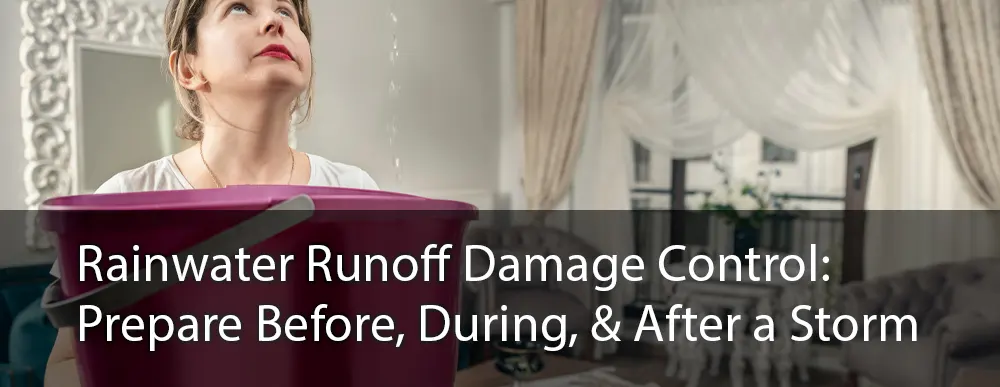
Rainwater Runoff Damage Control: How to Prepare Before, During, & After a Storm:
Your home protects you from the elements, but heavy rainwater runoff causes damage. It weakens that protection. Stay safe and dry with a bit of maintenance and active vigilance.
Spring rainstorms are a fact of life. They help keep things green, inside and out. But when they get heavy, damage follows. How will all that water and wind impact your home? Damage follows more times than not. You can reduce that damage. The first step is finding and fixing any immediate problems before storms. During and after the storm, wait until it is safe before working on repairs. Take measures to prevent those problems from happening during the next downpour!
Where is all that rainwater runoff going?
Your roof and gutters form a critical line of defense for your home. Before storms, protect your roof by cleaning out gutters and downspouts.
- Pull out leaves from the gutters.
- Install leaf guards. They help keep debris out of the gutters.
- Run a hose in the gutter, flushing debris out of downspouts and the gutters.
- Keep trees trimmed back, minimizing damage from falling leaves and branches.
- Confirm water flows away from the house. This helps to reduce flooding risks.
Before and after the storm:
Before the storm:
- Check for missing shingles and other issues. Shore up items that need some help.
- Your roof, gutters, and downspouts take a beating. They are vulnerable because so many things can damage them. Falling trees, wind-blown debris, hail, and other objects weaken roof systems. This leads to leaks in your roof. Make sure gutters and downspouts are in good working order.
After the Storm:
- Checking everywhere. Water dripping from the ceiling is hard to miss. Water in your crawl space, yet, can easily go undetected. Hardly anyone ever checks there. After a storm, make sure crawl spaces are dry. Take a peek into them and listen for water (or have a professional do it). Make sure everything is nice and dry. If you do see moisture, you’ll want to get it out with a sump pump as soon as possible.
And don’t just lookup. Another place to check is your home’s exterior. Check siding, brick, or other surfaces. Hard to see weak spots take more time to spot.
- Look at various times of the day in different lighting conditions.
- Shore up loose siding, gutters, and downspouts.
- Fill in cracks and crevices.
- Seal doors and windows.
What about stormwater runoff around your property?
Water damage happens with poor property drainage. Stormwater runoff should flow away from your property. You want rainwater runoff flowing away from your foundation.
- Check before storms and watch for water patterns. Remember our hose in the gutter trick? When you flush out all the debris, watch how the water flows. Make sure and grade property so water drains away from your home.
- Like the gutters, keep storm drains clear of leaves and other debris. This keeps water flowing away from your home, minimizing flooding on your property.
Heavy rainfall loosens the soil. Trees shift and fall. Muddy hillsides turn into rivers of mud. After storms, be wary of hillsides and tilting trees.
What should you do during the storm?
During powerful storms, stay inside. This is not the time to check your roof, your exterior, or your property. Watch your interior, making sure no water is getting in. If it is, do what you can to reduce the situation. Small things like catching dripping water in a bucket helps. For more serious problems, though, remember that safety is the most important thing. If your basement is flooding, for example, don’t go down there – you could be trapped and even drown.
Thankfully, powerful storms only hit once in a while. Prepare for them today. This way you are ready when tomorrow comes with the heavy storms.
Reposted with permission from the original author, Safeco Insurance®.
AP-5602/E 08/17

